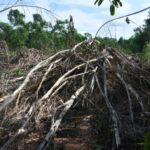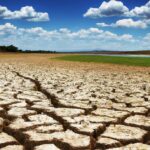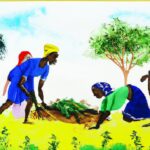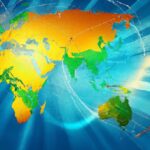Deforestation is the indiscriminate cutting down of trees, leading to devastating consequences for our planet. The felling of these majestic giants wipes out vital ecosystems and disrupts the delicate balance of our environment. It results in the loss of biodiversity, as countless species lose their natural habitats. The impact reaches far beyond the loss of trees; it contributes to climate change, as trees absorb carbon dioxide and release oxygen, regulating our climate. The destruction of forests also leads to soil erosion and disrupts water cycles, causing floods and droughts. It is imperative that we address this issue and promote sustainable practices to protect our forests and secure a healthier future for our planet.
Table of Contents
- Causes of deforestation
- Deforestation and biodiversity loss
- Deforestation and climate change
- Impacts of deforestation
- Solutions to combat deforestation
(Climate 101: Deforestation | National Geographic)
Deforestation is the destruction of forests and trees to make way for other types of land use, such as agriculture, urbanization, or logging. This widespread practice has devastating impacts on the environment, habitat loss, and climate change.
Forests are home to countless species of plants, animals, and insects. When trees are cut down, these creatures lose their homes and food sources, leading to a decrease in biodiversity. This loss of biodiversity has far-reaching consequences, as each species plays a vital role in maintaining a balanced ecosystem.
Moreover, deforestation contributes to climate change. Trees absorb carbon dioxide, a greenhouse gas responsible for trapping heat in the atmosphere. When trees are removed, this effect is diminished, resulting in increased global temperatures. Additionally, deforestation disrupts the water cycle, leading to altered rainfall patterns and even droughts in some areas.
The impact of deforestation on indigenous communities cannot be overlooked. Many tribes rely on forests for their livelihoods and cultural practices. When forests are destroyed, these communities lose their connection to their ancestral lands and face significant socio-economic challenges.
Efforts to combat deforestation include reforestation initiatives, sustainable logging practices, and the promotion of alternative land uses. Governments, NGOs, and individuals all have a role to play in preserving our forests for future generations.
In conclusion, deforestation poses a significant threat to our planet. The loss of forests impacts biodiversity, contributes to climate change, and harms indigenous communities. It is crucial that we take swift and decisive action to preserve and protect our forests before it’s too late. Time is of the essence, and the consequences of inaction are too dire to ignore.
Causes of deforestation
Causes of deforestation can be relatively complex, with a range of factors contributing to this widespread issue. One major cause relates to agricultural expansion. As global populations continue to rise, there is an increasing demand for food production. Farmers often resort to clearing forests to create more space for cultivating crops or raising livestock.
Another significant cause is logging for timber and wood products. Trees are harvested for various purposes, including construction, furniture, and paper production. This extraction of valuable resources contributes to deforestation, particularly in regions with lax regulations and weak enforcement measures.
Furthermore, deforestation is fueled by the expansion of urban areas and infrastructure development. As cities grow, more land is required to accommodate housing, industries, and transportation networks. This leads to the destruction of forests, often resulting in irreversible damage to ecosystems and biodiversity loss.
Additionally, mining activities contribute to deforestation. Mining operations require vast amounts of land to extract valuable minerals and resources. This process often involves the removal of trees, leading to the degradation of surrounding forest areas.
Indirect causes, such as climate change, also play a role in deforestation. Rising temperatures and changing rainfall patterns can affect the health and vitality of forests, making them more susceptible to diseases and pests. These factors, coupled with droughts and wildfires, further accelerate the rate of deforestation.
Moreover, weak governance and corruption contribute to deforestation. Inadequate law enforcement and insufficient protection of forested areas allow illegal logging and land encroachments to persist. This lack of governance creates an environment where deforestation can occur without repercussions.
Finally, poverty and socio-economic factors drive deforestation in some regions. Communities living in poverty often rely on forest resources for survival, such as fuelwood and subsistence agriculture. With limited access to alternative livelihood options, these communities may resort to unsustainable practices that deplete forests.
In conclusion, the causes of deforestation are multi-faceted and interconnected. Agricultural expansion, logging, urbanization, mining, climate change, weak governance, and poverty all contribute to this pressing issue. By understanding these causes, we can work towards implementing effective strategies to combat deforestation and ensure the preservation of our planet’s invaluable forests.
Deforestation and biodiversity loss
Deforestation, the process of clearing forests for various purposes, has severe consequences on biodiversity. Biodiversity refers to the variety of living organisms in an ecosystem, including plants, animals, and microorganisms. When forests are cut down, habitats are destroyed, and countless species lose their homes.
The loss of biodiversity due to deforestation is staggering. Forests are incredibly rich in biodiversity, with millions of species relying on these ecosystems for survival. Unfortunately, as trees are felled, the delicate balance of the forest is disrupted, and many species are unable to adapt or find new homes.
The destruction of habitats is particularly harmful to endemic species, which are uniquely adapted to thrive in specific environments. When their habitats disappear, these species face an uphill battle for survival. Many may not be able to find suitable alternatives, leading to their eventual extinction.
Not only does deforestation directly impact animals, but it also affects plants and microorganisms. Forests are home to a vast array of plant species, many of which have yet to be discovered and studied. When forests are destroyed, these plants are lost, along with their potential benefits for medicine and other important applications.
The loss of biodiversity also has cascading effects on ecosystem functioning. Each species plays a crucial role, whether it’s by pollinating plants, maintaining nutrient cycles, or regulating population sizes. When species disappear, these ecological processes are disrupted, leading to imbalances and potential ecosystem collapse.
The consequences of biodiversity loss extend beyond the natural world. Humans also depend on the services provided by healthy ecosystems. Forests help regulate climate by absorbing carbon dioxide and releasing oxygen. They also provide resources such as timber, food, and medicinal plants. As biodiversity declines, so does our ability to access these resources sustainably.
Deforestation and biodiversity loss are deeply interconnected, and addressing one requires addressing the other. Efforts to combat deforestation and promote sustainable land-use practices are crucial to protecting biodiversity. Conservation initiatives, reforestation projects, and stricter regulations on logging and land conversion can all help mitigate the impacts of deforestation.
Ultimately, the preservation of biodiversity is not just an environmental concern; it is a matter of our own survival. By valuing and protecting the incredible richness of life on Earth, we can ensure a healthier, more sustainable future for ourselves and countless other species that call this planet home.
Deforestation and climate change
Deforestation, the process of clearing and destruction of forests, has a significant impact on climate change. This destructive practice, driven by human activities such as logging, agriculture, and urbanization, contributes to global warming, loss of biodiversity, and disruption of ecosystems.
When forests are cut down, carbon dioxide, a greenhouse gas responsible for trapping heat in the atmosphere, is released into the air. Trees act as carbon sinks, absorbing CO2 from the atmosphere during photosynthesis. Thus, deforestation disrupts this natural process and increases the concentration of CO2, exacerbating the greenhouse effect.
Moreover, forests play a crucial role in regulating temperature and weather patterns. They release moisture through evapotranspiration, which contributes to cloud formation and rainfall. Deforestation disrupts this delicate balance, leading to reduced rainfall and increased temperatures in the affected areas. This change in climate patterns can have serious consequences, including droughts, flooding, and the loss of agricultural productivity.
Deforestation not only affects climate but also undermines biodiversity. Forests are home to countless species, many of which are endemic and found nowhere else on Earth. When their habitats are destroyed, these plants and animals lose their homes, leading to a decline in biodiversity. The loss of biodiversity not only threatens the survival of these species but also disrupts the balance of ecosystems, reducing their resilience to environmental changes.
The impacts of deforestation are felt not only locally but also globally. The Amazon rainforest, often referred to as the “lungs of the Earth,” plays a crucial role in regulating the planet’s climate. It absorbs vast amounts of CO2 and releases oxygen, making it a vital carbon sink. However, rampant deforestation in the Amazon threatens this vital ecosystem, with severe consequences for climate stability worldwide.
Addressing deforestation requires concerted efforts from governments, communities, and individuals. Implementing sustainable land-use practices, promoting reforestation and afforestation, and supporting indigenous and local communities in protecting their forests are crucial steps in combating deforestation and mitigating climate change.
In conclusion, deforestation is closely linked to climate change, as it releases CO2 into the atmosphere, disrupts weather patterns, and undermines biodiversity. Protecting our forests and promoting sustainable practices are essential for a stable climate and a healthy planet. It is time for us to recognize the importance of forests and take action to halt deforestation and preserve these precious ecosystems for future generations.
(Deforestation | Causes, Effects & Solutions | Video for Kids)
Impacts of deforestation
Deforestation, the widespread clearing of forests, has far-reaching impacts on the environment, society, and wildlife. One of the most significant effects is the loss of biodiversity. Forests are home to countless plant and animal species, and when trees are removed, these species lose their habitat. This disruption in the ecosystem can lead to extinction or migration of species, resulting in a loss of biodiversity.
Another consequence of deforestation is the alteration of climate patterns. Trees play a crucial role in regulating temperature and precipitation. Without their presence, the balance of moisture in the air is disrupted, leading to changes in rainfall patterns. This can result in droughts or floods, affecting agriculture and water availability for human populations.
Furthermore, deforestation contributes to climate change. Trees absorb carbon dioxide, a greenhouse gas that contributes to global warming. When forests are cleared, the stored carbon is released into the atmosphere, exacerbating the greenhouse effect. This not only contributes to climate change but also worsens air pollution, leading to respiratory problems for humans and wildlife.
Deforestation also has detrimental effects on local communities. Many indigenous people rely on forests for their livelihoods, using them for hunting, gathering, and traditional practices. When these forests are destroyed, their way of life is threatened, and they often face forced displacement and loss of cultural identity.
Additionally, deforestation has economic impacts on a global scale. Forests are sources of timber, medicinal plants, and other valuable resources. When forests are destroyed, these resources are lost, affecting industries and economies that rely on them. Moreover, the loss of forests can disrupt the tourism industry, as many tourists are attracted to the beauty and wildlife that forests provide.
Efforts to address deforestation include reforestation programs and sustainable logging practices. Governments, organizations, and individuals are working together to protect forests and promote sustainable land use. It is crucial to recognize the importance of forests in maintaining biodiversity, regulating climate, and supporting local communities.
In conclusion, deforestation has profound impacts on biodiversity, climate, local communities, and the economy. The loss of forests leads to a reduction in species diversity, altered climate patterns, increased greenhouse gas emissions, disruptions in the lives of indigenous people, and economic instability. Efforts to combat deforestation are essential to preserve the environment, protect vulnerable communities, and ensure a sustainable future for all.
Solutions to combat deforestation
Deforestation poses a grave threat to the environment and biodiversity, but there are effective solutions available to combat this issue. One approach is to promote sustainable logging practices, ensuring that trees are selectively harvested rather than clear-cut. By doing so, we can maintain the integrity of the forest while meeting our timber needs. Additionally, implementing stricter regulations and enforcing penalties for illegal logging activities can act as a deterrent. Alongside these measures, it is crucial to educate local communities and raise awareness about the importance of forests, encouraging them to take a proactive role in forest conservation. Community-based initiatives, such as agroforestry programs, can also help combat deforestation. These programs involve cultivating crops alongside trees, providing much-needed income for local communities while also preserving forests. Afforestation and reforestation efforts play a vital role in combating deforestation as well. Planting new trees in areas that have been deforested can help restore ecosystems, reduce soil erosion, and absorb carbon dioxide. Governments and organizations can spearhead these efforts by providing financial incentives and technical support to encourage tree planting initiatives. Adopting sustainable farming practices is another key solution to deforestation. Encouraging farmers to use techniques like terracing, crop rotation, and organic farming can help reduce the need for clearing new land for agriculture. Moreover, adopting alternative energy sources, such as solar and wind power, can reduce the demand for timber and consequently mitigate deforestation. International cooperation is also essential in combatting deforestation, as it often occurs in countries with limited resources and institutional capacities. Developed nations should assist these countries by providing financial aid, technology transfers, and capacity-building programs to support their forest conservation efforts. Finally, raising public awareness on deforestation and its consequences is crucial to generate popular support for conservation efforts. Media campaigns, educational programs, and environmental advocacy can encourage individuals to make sustainable choices and put pressure on policymakers to enact stricter regulations against deforestation. In conclusion, a combination of sustainable logging practices, stricter regulations, community-based initiatives, afforestation and reforestation efforts, sustainable farming practices, adoption of alternative energy sources, international cooperation, and public awareness campaigns can collectively combat deforestation effectively. It is our responsibility to take immediate action to protect and preserve our forests for future generations.













